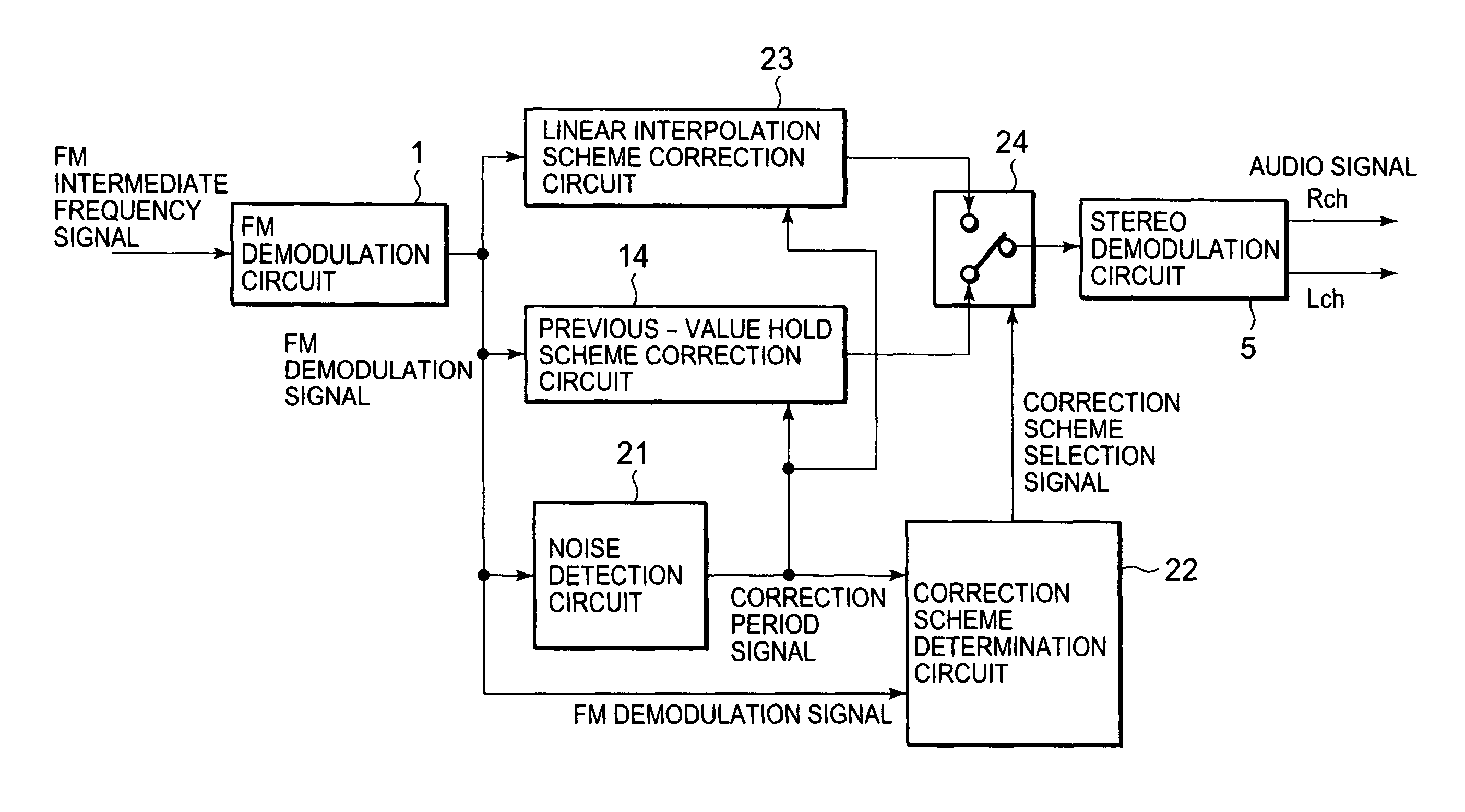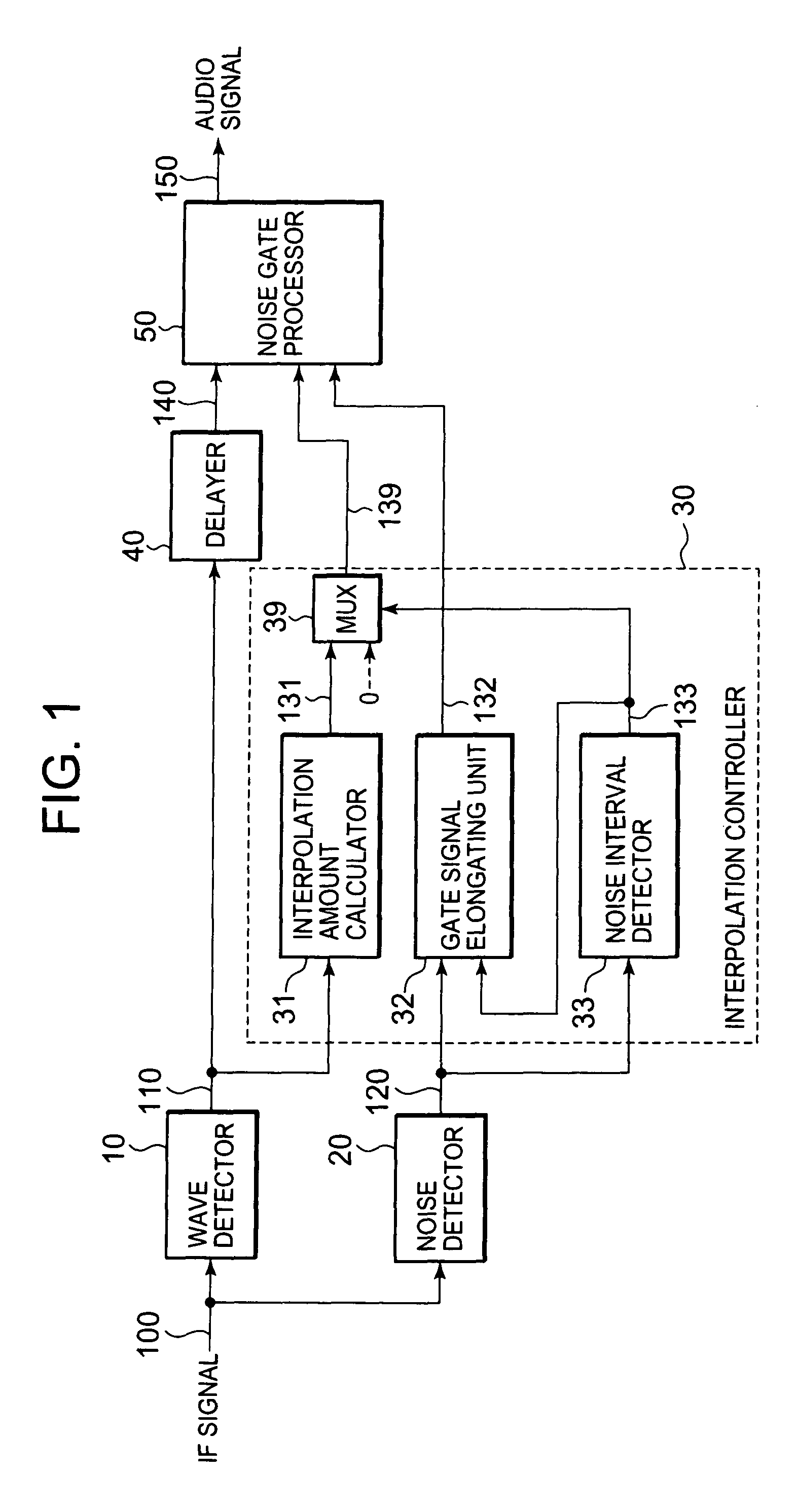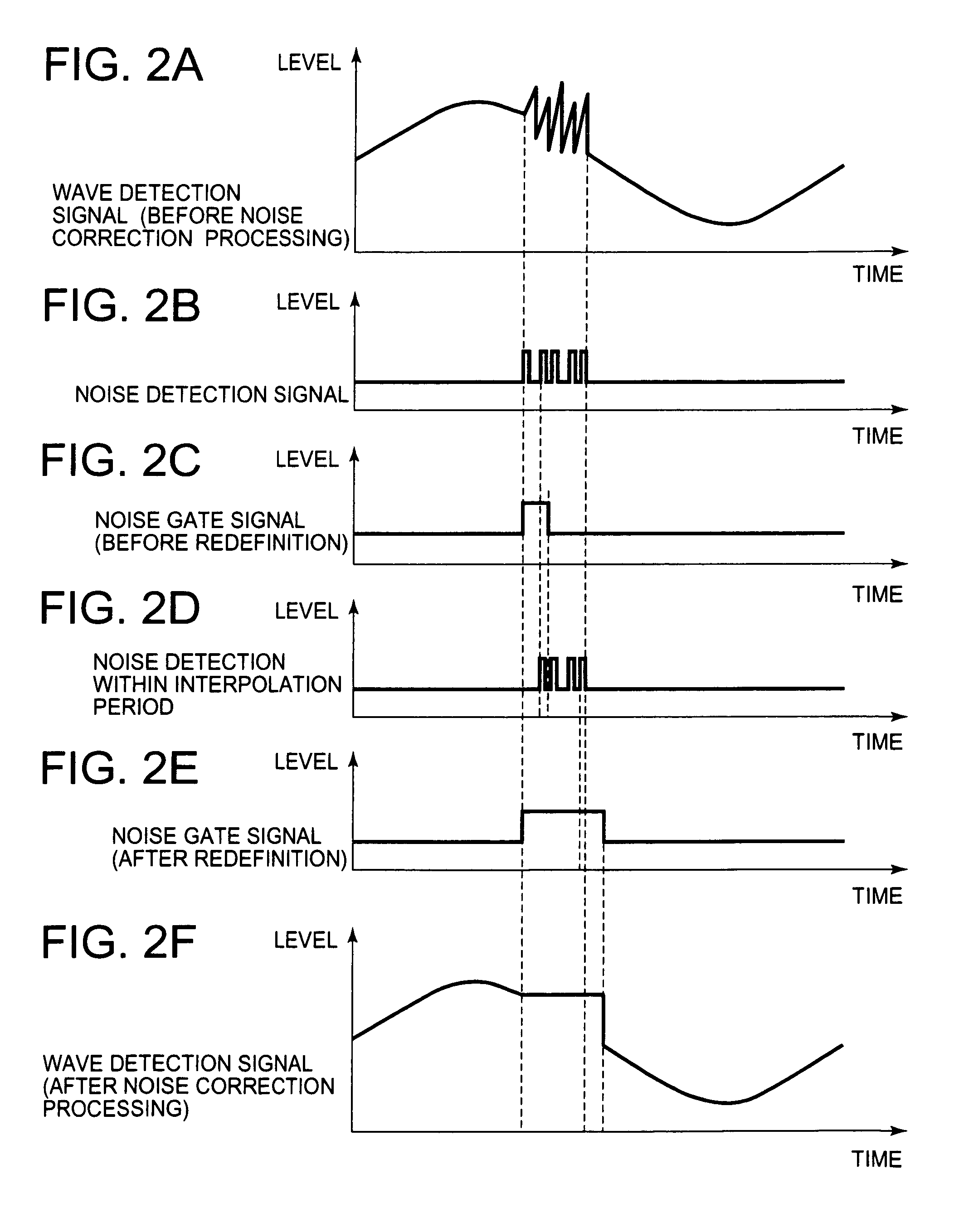Noise removal device and noise removal method
a noise removal device and noise removal technology, applied in pulse technique, phase-modulated carrier system, baseband system details, etc., can solve the problems of inability to achieve satisfactory correction, inability to reduce noise satisfactorily with linear interpolation scheme, and deterioration of audio quality of radio signal received by the radio receiver
- Summary
- Abstract
- Description
- Claims
- Application Information
AI Technical Summary
Benefits of technology
Problems solved by technology
Method used
Image
Examples
embodiment 1
[0032]Using FIG. 1, a description will be given first of the configuration of a noise removal device according to Embodiment 1. FIG. 1 is a block diagram showing the configuration of the noise removal device according to Embodiment 1. In FIG. 1, the noise removal device according to Embodiment 1 includes a wave detector 10, a noise detector 20, an interpolation controller 30, a delayer 40, and a noise gate processor 50.
[0033]An intermediate frequency (IF) signal 100 for a radio receiver is supplied to the wave detector 10 and to the noise detector 20. The wave detector 10 detects (demodulates) the IF signal 100, and extracts a wave detection signal 110 therefrom. At this time, the wave detector 10 also enhances noise components included in the IF signal 100.
[0034]The delayer 40 receives the wave detection signal 110 and delays it for a given length of time, and outputs a delay signal 140. The delayer 40 is provided to compensate for time necessary for preparation for noise correctio...
embodiment 2
[0058]Using FIG. 4, a description will be given of a noise removal device according to Embodiment 2. FIG. 4 is a block diagram showing the configuration of the noise removal device according to Embodiment 2. The configuration of the interpolation controller 30 of Embodiment 2 is different from that of Embodiment 1. As other configurations are the same as Embodiment 1, their descriptions will be omitted.
[0059]In FIG. 4, the interpolation controller 30 of the noise removal device according to Embodiment 2 further includes a counter 34. The counter 34 disables the operation of redefining the interpolation period when a count value of noise detection within the interpolation period reaches a certain value. In other words, when the number of the noise interval detection signals 133 inputted into and counted by the counter 34 reaches a predetermined count value, the counter 34 outputs a disabling signal 134 for causing the gate signal elongating unit 32 not to perform the interpolation pe...
embodiment 3
[0062]Using FIG. 5, a description will be given of a noise removal device according to Embodiment 3. When interpolation is performed on the IF signal 100 having rather high amplitude, the use of the previous-value hold scheme may cause a large step of difference in noise level at the endpoint of the interpolation period. This rather deteriorates the audio quality. In this respect, the noise removal device of Embodiment 3 is configured so that the linear interpolation scheme can be selected depending on the level of the input signal. FIG. 5 is a block diagram showing the configuration of the noise removal device according to Embodiment 3. The noise removal device of Embodiment 3 has a configuration in which a level detector 60 is further included in the configuration of Embodiment 1. As other configurations are the same as Embodiment 1, their descriptions will be omitted.
[0063]In FIG. 5, the IF signal 100 is supplied to the wave detector 10, to the noise detector 20, and to the level...
PUM
 Login to View More
Login to View More Abstract
Description
Claims
Application Information
 Login to View More
Login to View More - R&D
- Intellectual Property
- Life Sciences
- Materials
- Tech Scout
- Unparalleled Data Quality
- Higher Quality Content
- 60% Fewer Hallucinations
Browse by: Latest US Patents, China's latest patents, Technical Efficacy Thesaurus, Application Domain, Technology Topic, Popular Technical Reports.
© 2025 PatSnap. All rights reserved.Legal|Privacy policy|Modern Slavery Act Transparency Statement|Sitemap|About US| Contact US: help@patsnap.com



